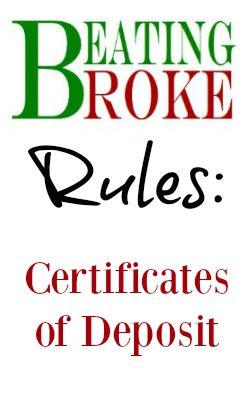A car is a major investment, not just in the money you pay upfront, but also in the money it takes to maintain it. Tire quality, battery longevity, and insurance coverage can all take a major bite out of your budget. Fortunately, there are ways to lower these costs without sacrificing quality.
From discounts on tire maintenance to the ins and outs of insurance rates, here are some of the ways to get the least expensive offerings for your automotive needs.
The Potential Savings of Auto Insurance
There are many ways for consumers to lower their auto insurance bills, and one of the most obvious ways involves adjusting the policy to have only the offerings most necessary for a specific situation.
There are two main auto insurance types that protect your vehicle in the event of an accident: collision and comprehensive. Collision covers you in the event of an accident involving your car and another vehicle or object, while comprehensive covers non-collision damages. But what is the cost difference between collision and comprehensive auto insurance?
If you have both collision and comprehensive auto insurance, then you have full coverage. As a general rule, if you don’t fully own your car, you will be required to get collision or comprehensive car insurance.
Collision insurance handles damages from hitting a parking post, bench, tree, curb, or vehicle, regardless of who is at fault. It is often cheaper than other options, but once your car’s value surpasses what the insurance will pay out in the event of an accident, you should probably drop it.
Comprehensive auto insurance covers any damage to the vehicle that isn’t caused by a collision, such as accidents involving animals running into the road, property damages, falling trees, floods, fires, and projectiles. It often covers theft and vandalism as well.
However, comprehensive insurance doesn’t cover regular wear and tear or the value of the car’s contents. In most cases, collision and comprehensive car insurance are bundled into one offering by an insurance company, but often you can choose to purchase only one or the other to save on money.
Opting for comprehensive coverage alone is, on average, under $200 a year, whereas choosing collision alone bumps average rates up to around $360.
Liability insurance, which is for covering the other driver in an accident you cause but not yourself, often is more expensive than both of the former together. Full coverage, including liability, often costs over $1,000 per year. To see exact numbers for your situation, you should request a variety of quotes from different insurers.
The auto laws in your state may also dictate which insurance you are required to have, and often liability is required. Understanding what different types of coverage mean will allow you to choose the best option for you.
Many choose to keep the necessary liability coverage and then have to decide between comprehensive, collision, or neither.
However, if your car is of a high enough value, it may be more cost effective to opt for full coverage so you don’t have to recoup the loss of the whole car in the event of an accident.
The Cost of Tires
Tires can be an expensive investment, ranging from $50 for cheaply made ones to $1,000 for specialty premium ones. Most people will buy tires in the $100–$500 range in addition to the mounting and balancing costs. Most auto shops will charge a standard fee for installing tires that ranges from $15 to $45.
Fortunately, you can save a bundle on the cost of tires by shopping in April or October, which are the two months when tires are most likely to go on sale (in preparation for winter roads and summer trips). Shopping online or at warehouse stores can also give you access to much more affordable tires.
In addition, many tire manufacturers offer rebates throughout the year, so look into what your tire manufacturer may be offering. Having an older car may impact the cost of your tires, too.
Depending on the quality of your tires, you should inspect them after five or six years and absolutely replace them after 10. The amount you drive and the quality of the tires will affect how long they last, however, so be sure to get them checked regularly.
Another thing that affects the cost of tires is air pressure. Properly inflated tires save up to 11 cents on the gallon, and improperly inflated tires will not only impact your mileage but also weaken your tires. This will force drivers of low-pressure tires to need to replace them earlier.
There are plenty of ways to save on air refills, however. In 2013, Nissan implemented a new feature on the 2013 Nissan Altima called the Easy-Fill Tire Alert. This feature warns drivers when their tires need to be refilled. Technological advancements like this can help the savvy consumer save more over the years.
The Expense of Car Batteries
All car batteries have a limited lifespan and will eventually lose their charge. Although it takes only a tiny amount of gas usage to charge the battery, maintaining it properly can take a lot of horsepower. This, combined with the fact that gas prices have risen astronomically since 1979, means that it’s important for car owners to improve battery life.
Often, you can get cheap batteries at local stores like Walmart and Costco, but it can also be dangerous to opt for the cheapest option, as they can often corrode or wear out more quickly. The easiest way to have a cheap battery is to maintain and care for your current one so it costs less to replace.
Turn off your lights when the engine is off, and make sure that nothing drawing on the electrical power is running when you exit your car.
You should also try to keep your battery fairly cool. While cold weather makes it harder to start your engine, the real reason why batteries struggle is due to the wear and tear of heat. Heat increases water evaporation, sapping the battery cells. This then results in the car struggling to start once cold weather arrives.
To combat this, park your car in the shade or in a garage whenever possible and try to keep your engine from overheating. Taking care of your car battery can help you both save money and help the environment.
These are just a few of the ways to lower the cost of auto insurance, tires, and batteries. Consider your vehicle’s needs and compare offerings to get the best possible deals.
About The Author: Deborah Goldberg is an insurance expert who writes and researches for the auto insurance comparison site, AutoInsurance.org.



